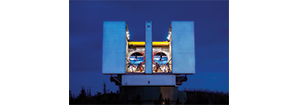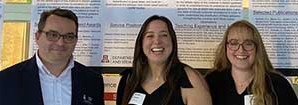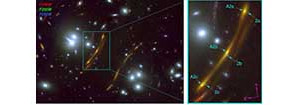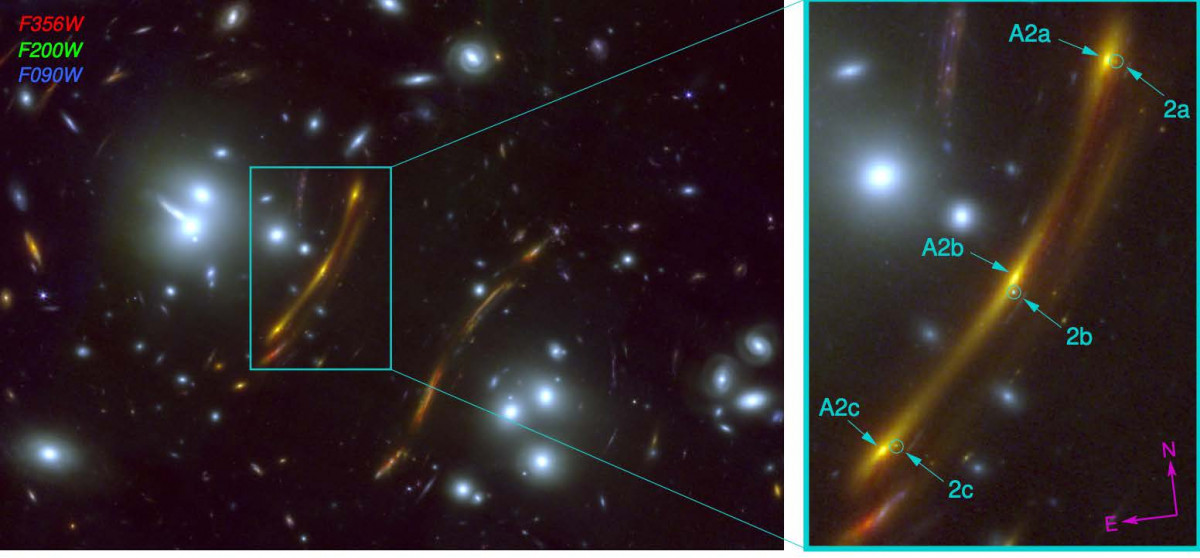Spotlight

Astronomers discover elusive planet responsible for spiral arms around its star
The Large Binocular Telescope in Arizona. The LBTI instrument combines infrared light from both 8.4-meter mirrors to image planets and disks around young and nearby stars.
Scientists have long thought that spiral arms in protoplanetary disks could be caused by nascent planets, yet none had been detected until now.
"Our study puts forward a solid piece of evidence that these spiral arms are caused by giant planets," said Kevin Wagner, lead author of the paper and a postdoctoral researcher at the UArizona Steward Observatory. Learn more

Congratulations to our 2023 College of Science Graduate Student Award Recipients from the Department of Astronomy
Please join me in congratulating our 2023 College of Science Graduate Student Award Recipients from the Department of Astronomy — a reception was hosted by the College on Monday of this week to honor all the award winners from the College and two of our students and their mentors/advisors were able to attend in person (photos of Samantha Scibelli and her advisor Yancy Shirley and Rachel Amaro and her advisor Daniel Apai are attached). Jiachuan Xu (advisor Tim Eifler) was on travel.
Congratulations to Jiachuan, Rachael, and Samantha!!! Some notes about their awards and why they were selected are below.
We will celebrate/recognize these award winners at the end of the Steward Observatory Internal Symposium this Friday. Each year there are three awards in each department for outstanding achievement/performance in the areas of research, teaching, and service.
Congrats to our three amazing students!
Buell Jannuzi, Xiaohui Fan, and Kaitlin Kratter
Jiachuan Xu: Research - Jiachuan is being recognized for his work on a new cosmological measurement technique known as Kinematic Lensing, which will utilize data from the upcoming Roman Space Telescope and other data sets.
Sam Scibelli: Teaching — Sam is being recognized for her outstanding work as a TA in ASTR 196 and 300B simultaneously. Sam took over in-class instruction for our undergraduate radiative processes classes due to an unexpected faculty illness.
Rachael Amaro: Service - Rachael is being recognized for her leadership as both a member of the initial Steward Observatory Diversity and Inclusiveness Committee, as well as one of the founders of the student led Steward Observatory Diversity, Equity, and Inclusion initiative.

A Bright and Shiny Result from PEARLS
We report the discovery of a new transient in James Webb Space Telescope (JWST) NIRCam exposures of the massive galaxy cluster PLCK G165.7+67 (G165) taken as part of the Prime Extragalactic Areas for Reionization and Lensing Science (PEARLS) program (GTO-1176; PI: R. Windhorst). The source was not detected in previous Hubble Space Telescope images (Frye et al. 2019; Pascale et al. 2022).
Follow-up spectroscopy was accomplished using the Large Binocular Telescope (LBT) LUCI in a consortium-wide effort. The partners from Germany allocated the telescope time, the partners from Italy prepared, carried out, and reduced the spectroscopy, and the partners from UArizona directly supported the organization and observing activities. As a result of this grand effort, the redshift of the SN host was measured.
Additional imaging and spectroscopy have been carried out with JWST (DD-4446; PI: B. Frye). This one transient is detected in three different locations (a, b, and c) as a result of gravitational lensing by the foreground galaxy cluster G165. Our gravitational lensing model predicts that light from the transient arrived first in image “a,” followed by “c,” and then “b”. This transient, which we designate as "SN H0pe," is s Type Ia supernova that was classified as a result of analyzing the JWST observations.

Figure caption: JWST/NIRCam color image in the central region of G165. {\it Right:} Closeup of the boxed region depicting the three images of the galaxy Arc 2, as labeled. The SN Ia candidate is circled. Note the parity flip between images 2c and 2b, and images 2b and 2a, as predicted by lensing theory. The SN Ia candidate appears in all three images.
Pages

For Public
Public events include our Monday Night Lecture Series, world-reknowned Astronomy Camp and Mt Lemmon Sky Center.

For Students
A good place to start if you want to become an undergrad major or grad student, or need to find our schedule of classes.

For Scientists
Find telescopes and instruments, telescope time applications, staff and mountain contacts, and faculty and staff scientific interests.




